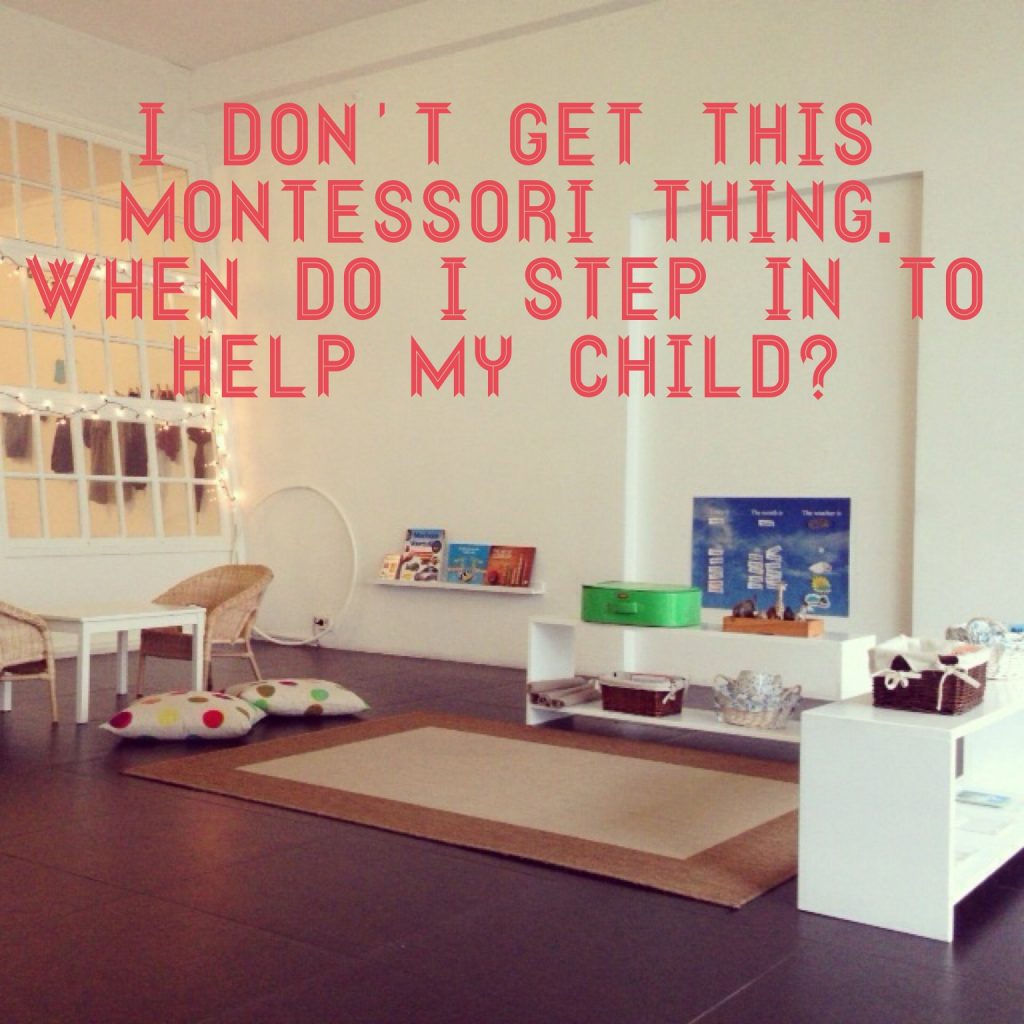I don’t get this Montessori thing. When should I step in to help?
I don’t get this Montessori thing. When should I step in to help?
The sun is back! And I’m so happy to be back to classes with the kids.
It was a delight to work with a new toddler to make orange juice together. The toddler stood back to watch me make the juice and then I gave them the peel and pointed to the little bin. They were so happy to take the orange peel and place it in the bin for me. They pick it up so quickly and love to be involved. The preschoolers were so happy to be back too; so busy you could hear a pin drop. And we had lots of new babies in our baby class, exploring and observing in the space.
Lots of fun.
One of the questions I get asked a lot by new parents coming to classes (and some long time parents too!) is how much should they be doing with their child, when to step in and help, and when to observe. So I would love to give you a few practical tips which will hopefully be useful both in the classroom and at home.

1. Step in to help just a little and step back for your child to do the rest
Dr Montessori used to wear some rosary beads and used to count the beads when she was tempted to help a child when they could manage themselves.
Who has not struggled to keep their hands off a puzzle when your child can’t quite get the puzzle piece in? Or to sit on your hands when we, as the adult, could put on their shoes much quicker?
Last week, a baby was interested in taking off their socks. I could have stepped in and taken them off for them. Instead, I helped a little by lowering the sock over their heel and then the child did the rest pulling it off by the toe of the socks.
Of course when we are in a rush, this is more difficult. But, when possible, ALLOW TIME for the child to struggle and succeed.
2. Observe your child
I love the Montessori idea of following your child and taking cues from them. They can show you what activities they are interested in, they can show you when they are all done, or when they need you to step in to help.
A toddler explores the environment with his hands and initially without a plan what he will do first. He is attracted by activities set out for him to discover, so some activities can be set out ready rather than being packed away in a cupboard or toy box. If they show no interest in the activities set out, take them away and rotate other toys in.
Even as a baby, they can show you when they are done with an activity by looking around, crying, or fussing.
And if a toddler starts to throw an activity or struggle, you may need to step in to provide a little assistance before you step back for them to do the rest themselves. Or it can be a sign that the activity is too easy or too difficult and should be swapped for another activity.
3. Set up the environment so they can be independent
It is nice for the space to be set up so your child can help out. For example, child sized cleaning materials at hand, a hand mitt at the ready at meal times, or a small jug of milk for the child to pour his own milk at breakfast.
In this way, the child can feel like part of the family and help out.
When a child asks for my assistance to reach something, or children repeatedly need my help with an activity, I try to think of a way that I can change the environment so the child can achieve the same thing without assistance. It may be as simple as having a step stool available to wash their hands, or something like putting out just enough paper that they can repeat (and not so much that it is a lot to clean up!).
4. Do things together around the house
So all the above points talk about allowing your child to do things by themselves. But I also really value working together with my children, particularly with everyday jobs around the house.
It might be to help get ready for their grandma to visit, helping to make the bed, or tidy away some toys.
It might be shopping at the supermarket together with them helping to get things from the shelves, or working side by side in the kitchen with them doing some age appropriate activities.
5. Side by side learning – guiding your child along the path of life
Which leads me to my last suggestion: be your child’s guide through life. You don’t have to know all the answers. Living with young children with enquiring minds I find myself saying almost every day, “I don’t know…let’s find out together!”
I would love to hear about how you give your child time to be independent and how to balance that with living together. Please share your ideas over on the Facebook page here.

Simone Davies has more than 20 years’ experience as an AMI Montessori educator. Simone is the author of “The Montessori Toddler” and co-author of “The Montessori Baby” and “The Montessori Child” books, comprehensive guides to raising children in a Montessori way. She currently runs parent-child Montessori classes in Amsterdam at her school Jacaranda Tree Montessori. She also has a popular blog, instagram and podcast “The Montessori Notebook” and is mother to two young adults.